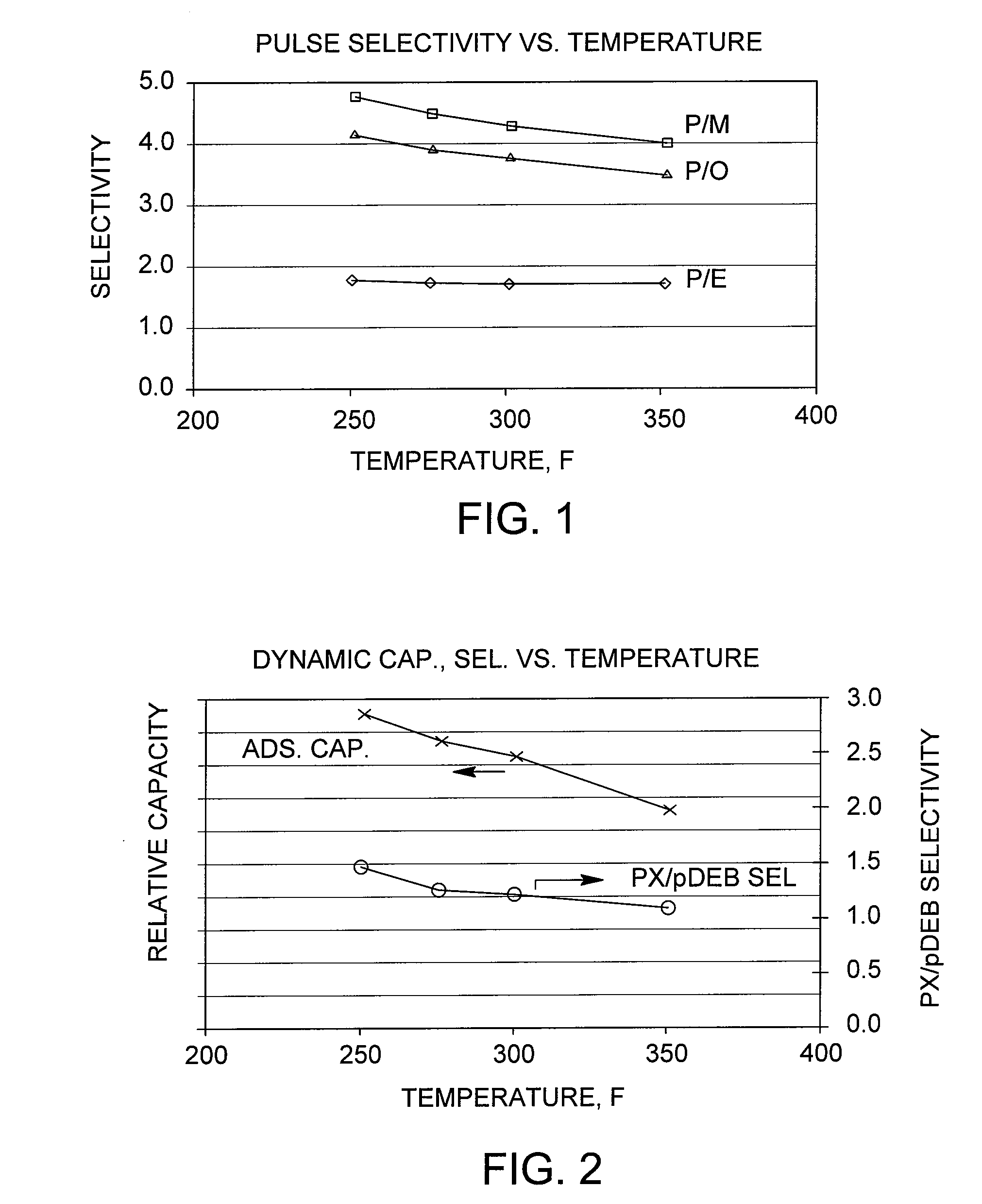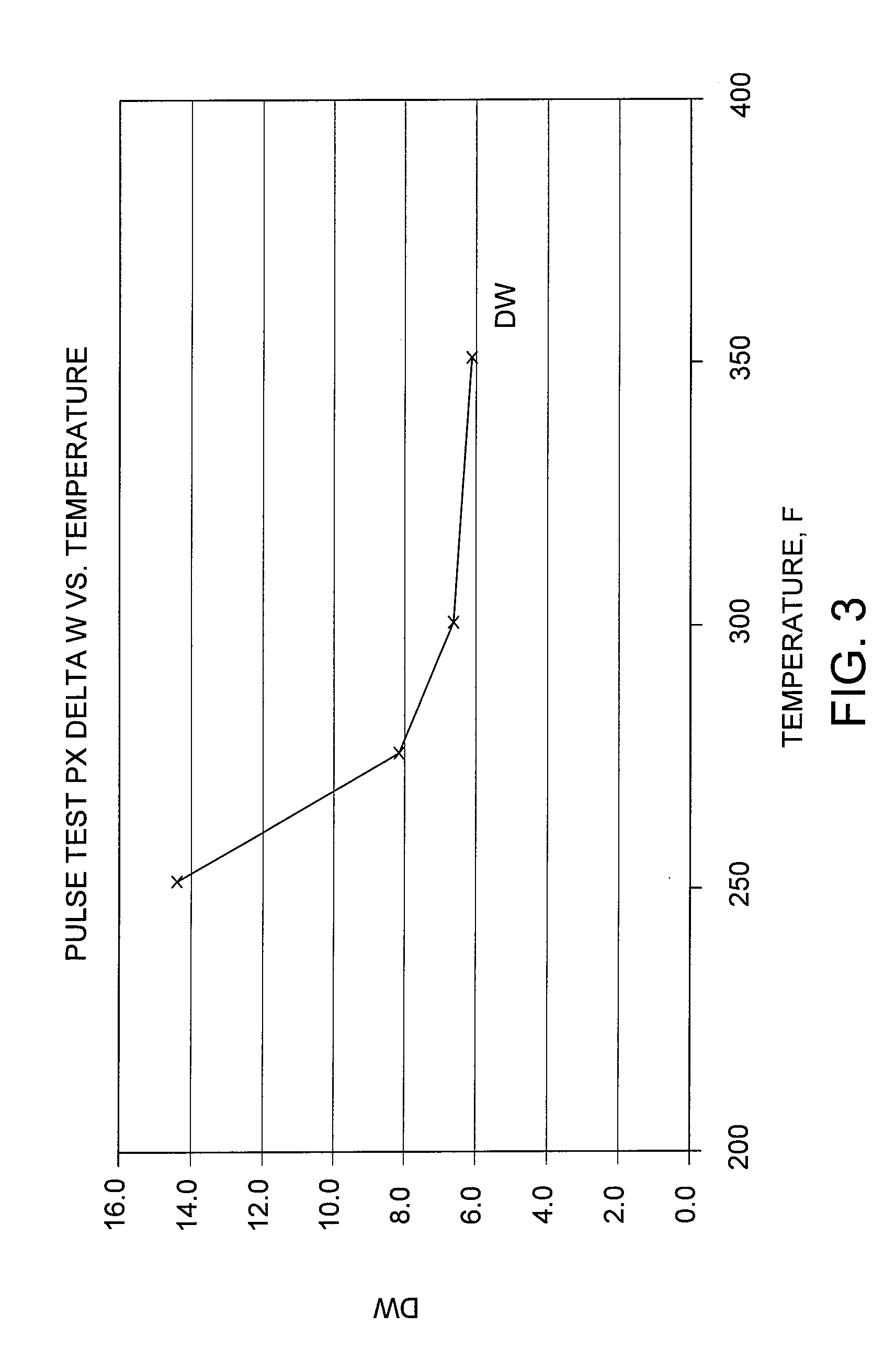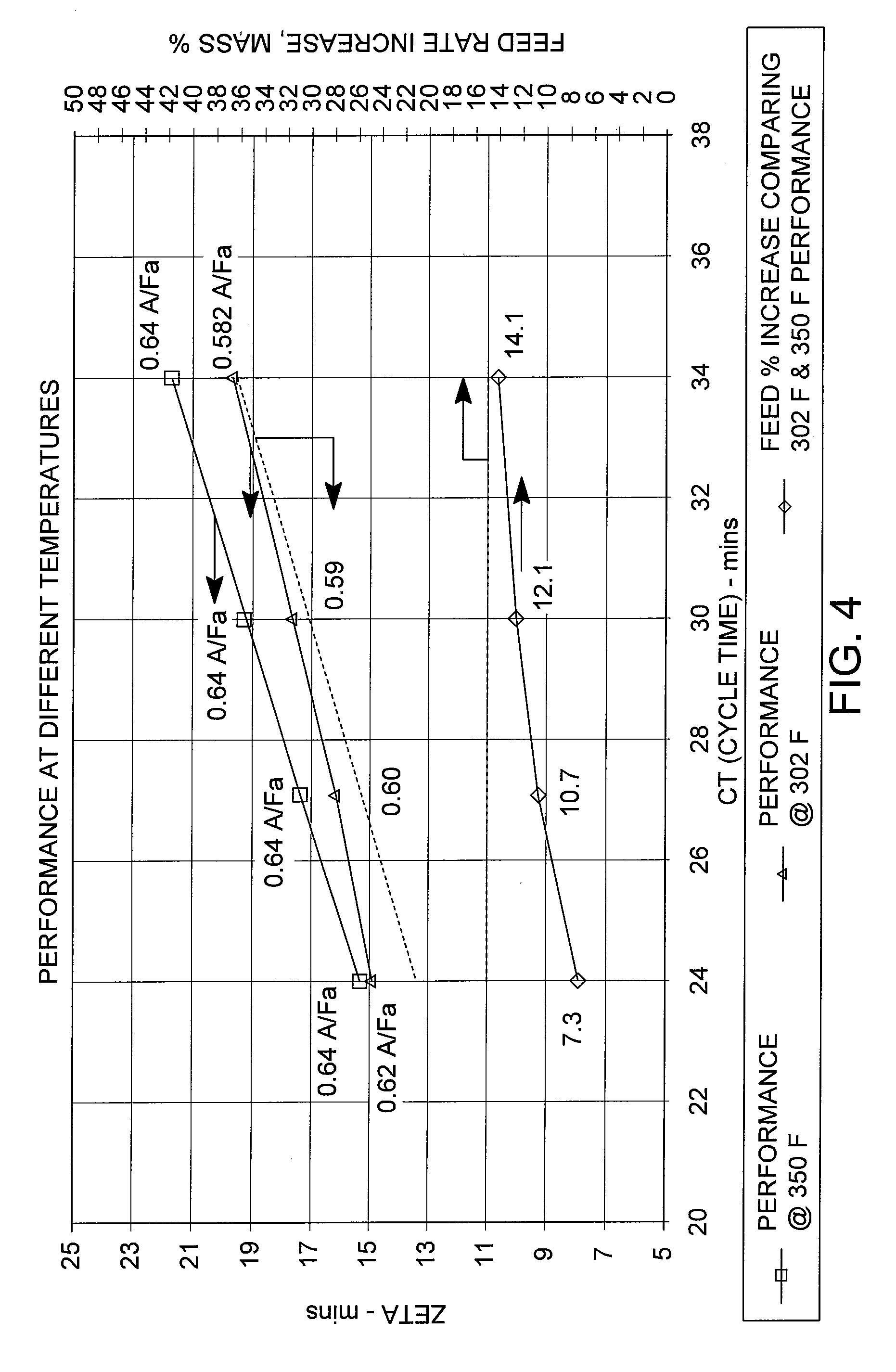Adsorbents with improved mass transfer properties and their use in the adsorptive separation of para-xylene
a technology of para-xylene and adsorbent, which is applied in the direction of hydrocarbon purification/separation, chemistry apparatus and processes, organic chemistry, etc., can solve the problems of diminishing the advantages of lower operating temperatures, and achieve the effects of increasing the productivity of para-xylene, high mass transfer properties, and short cycle times
- Summary
- Abstract
- Description
- Claims
- Application Information
AI Technical Summary
Benefits of technology
Problems solved by technology
Method used
Image
Examples
example 1
Selectivity Testing
[0067]A conventional adsorbent comprising zeolite X exchanged with barium and potassium, and having an LOI of 6 wt-%, was evaluated in the adsorptive separation of para-xylene. A standard pulse test as described above was performed by first loading the adsorbent in a 70 cc column under the desorbent para-diethylbenzene. A feed pulse containing equal quantities of ethylbenzene and each of the three xylene isomers, together with a normal nonane (n-C9) tracer, was injected. Pulse tests were performed at various column temperatures in the range from 121° C. to 177° C. (250° F. to 350° F.) to examine the effect of temperature on selectivity. The para-xylene selectivities were determined from the component peaks obtained from each of these pulse tests, and the results are shown in FIG. 1.
[0068]The results show that the para-xylene / meta-xylene selectivity, “P / M,” and the para-xylene / ortho-xylene selectivity, “P / O,” increase at lower adsorption temperatures, while the par...
example 2
Capacity Testing
[0069]A chromatographic separation (dynamic capacity or breakthrough test) was performed using a conventional adsorbent as described in Example 1. A column containing 70 cc of the adsorbent, initially loaded under para-diethylbenzene, was charged with a sample feed mixture containing ortho-xylene, meta-xylene, para-xylene, and ethylbenzene. Breakthrough tests were performed at various column temperature in the range from 121° C. to 177° C. (250° F. to 350° F.) to examine the effect of temperature on adsorbent capacity and para-xylene / para-diethylbenzene selectivity, “PX / pDEB Sel,” and the results are shown in FIG. 2. The results further confirm that lower adsorptive separation temperatures are favorable, in terms of total adsorbent capacity, without adversely affecting the para-xylene / desorbent selectivity.
example 3
Mass Transfer Rate
[0070]Using the data obtained from pulse tests as described in Example 1, the “DW” or “Delta W,” namely the half width of the para-xylene peak (i.e., peak envelope width at half intensity), minus the half width of normal nonane tracer peak (to account for dispersion), was determined as a function of temperature. The results are shown in FIG. 3 and indicate that mass transfer limitations become significant in conventional para-xylene adsorptive separation processes at temperatures below about 177° C. (350° F.).
PUM
| Property | Measurement | Unit |
|---|---|---|
| Temperature | aaaaa | aaaaa |
| Temperature | aaaaa | aaaaa |
| Fraction | aaaaa | aaaaa |
Abstract
Description
Claims
Application Information
 Login to View More
Login to View More - R&D
- Intellectual Property
- Life Sciences
- Materials
- Tech Scout
- Unparalleled Data Quality
- Higher Quality Content
- 60% Fewer Hallucinations
Browse by: Latest US Patents, China's latest patents, Technical Efficacy Thesaurus, Application Domain, Technology Topic, Popular Technical Reports.
© 2025 PatSnap. All rights reserved.Legal|Privacy policy|Modern Slavery Act Transparency Statement|Sitemap|About US| Contact US: help@patsnap.com



